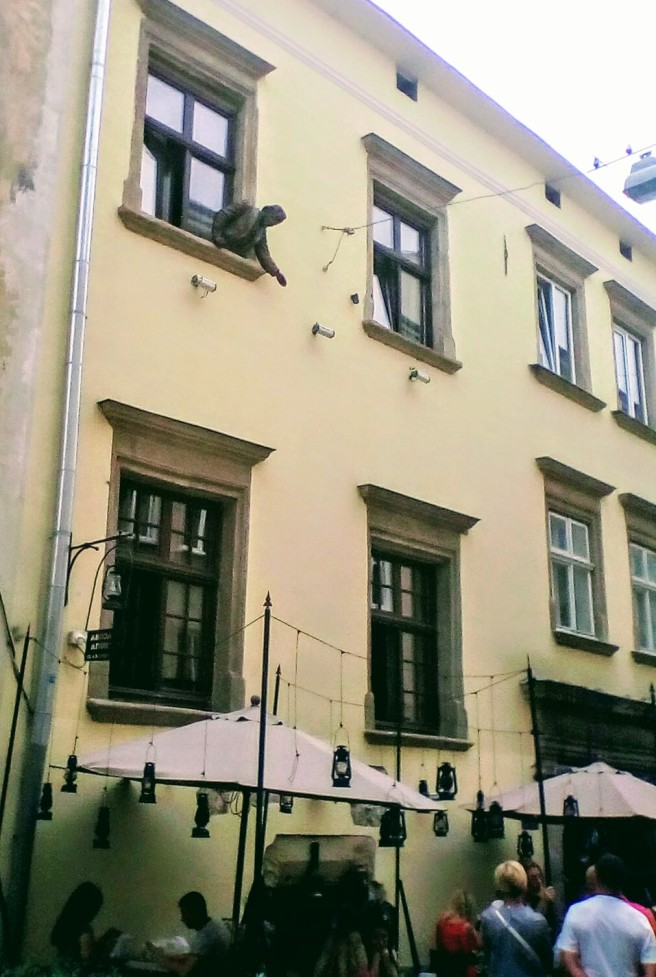If you are anything like me you have never spent more than one hour thinking, speaking or reading about kerosene. But that changed when in L’viv, Ukraine I discovered the Kerosene Museum.
 According to history kerosene became a “thing” in the 9th century in Persia, discovered by a chemist named Razi and written about in his “Book of Secrets”
According to history kerosene became a “thing” in the 9th century in Persia, discovered by a chemist named Razi and written about in his “Book of Secrets”
Kerosene is used worldwide under different names. If you were in Chile, Eastern Africa, South Africa or the United Kingdom you might be buying paraffin. If you were in asia you might be buying lamp oil, and in the United States it was called coal oil; but, is also known as white naptha.
A little divergence here. I remember my Grandmothers using Fels-Naptha soap in the old wringer washing machine. Fels Naptha soap is a sodium salt from Tuerpene, processing hydrocarbons and it is now produced by Purex Corporation. They say that if you grate 1/2 bar of Fels Naptha and add it to your wash it will eliminate residual stains. I don’t know if I want to stand around and grate half a bar of soap but if you do, you can purchase Fels-Naptha bar soap from Amazon, Walmart or Ace Hardware – happy soaping!
 So what is kerosene? Actually, it’s a clear liquid produced by distilling petroleum. It’s used as fuel in jet engines, rocket fuel; or, if you’re camping it’s used for cooking and lighting fuel. In Asia it’s used in motorcycle engines and outboard motors.
So what is kerosene? Actually, it’s a clear liquid produced by distilling petroleum. It’s used as fuel in jet engines, rocket fuel; or, if you’re camping it’s used for cooking and lighting fuel. In Asia it’s used in motorcycle engines and outboard motors.
Recent history of kerosene starts in 1846, in Canada with geologist Abraham Gesner, in Charlottetown, Prince Edward Island where he developed a new process for making kerosene. Gesner wanted to patent his new process in Canada but ran up against governmental regulations and petroleum industry roadblocks, so in 1854 he moved to New York state and patented “Kerosene”.
In 1846 another chemist from Scotland by the name of James Young also found a process for making kerosene. He took out a patent in both Scotland and the United States prior to the 1854 patent of Gesner.
In 1851 Samuel Martin Kier known as the “Grandfather of the American Oil Industry” came along with carbon oil.
And now we come to L’viv and Ignacy Lukasiewicz a Polish pharmacist living in L’viv, and his Hungarian partner Jan Zeh who worked to improve upon Gesner’s process, using the petroleum from a local seep.

…. I don’t know which guy is hanging out of the window in the second floor, your guess is as good as mine 🙂
The local people did not really take them seriously until the night of July 31st 1853 when there was an emergency in the local hospital; and none of the lamps were bright enough to allow the surgery to proceed. The surgeon, knowing about their experiment with bright lantern light urged someone to go and get the lanterns from the pharmacist.
They were amazed at how bright the light was. After the brilliant success (pun) in the surgery the pharmacist quit his job at the pharmacy, travelled to Vienna and registered a patent on his product. In 1854 he moved to Poland with his patented product, and subsequently set up a refinery in 1859.
A side benefit to the discovery of kerosene is that in prior times whale oil had been the typical product for lamps. When kerosene became widely used, whale hunting decreased. In 1858 there were 199 whaling ships, in 1860 there were 167, in 1866 105, and in 1874 only 39.
Buy Kerosene – Save a whale!

Same as my Grandmother in Oregon, sixty years ago:) Wow..how odd, right? A kerosene museum..who would have thunk!:)
Sent from my Verizon 4G LTE Smartphone
LikeLike
My mother used to make me wash my body with Fels Naptha bar soap when I came out of the hills behind our house that were covered in Poison Oak, to which my father and I were allergic. (She made me take my clothes off at the back door so we didn’t get the oils on the carpet or anywhere else.)
Kristin Olson
________________________________
LikeLike
Yes, my reading said it was recommended for poison oak and ivy.
LikeLike